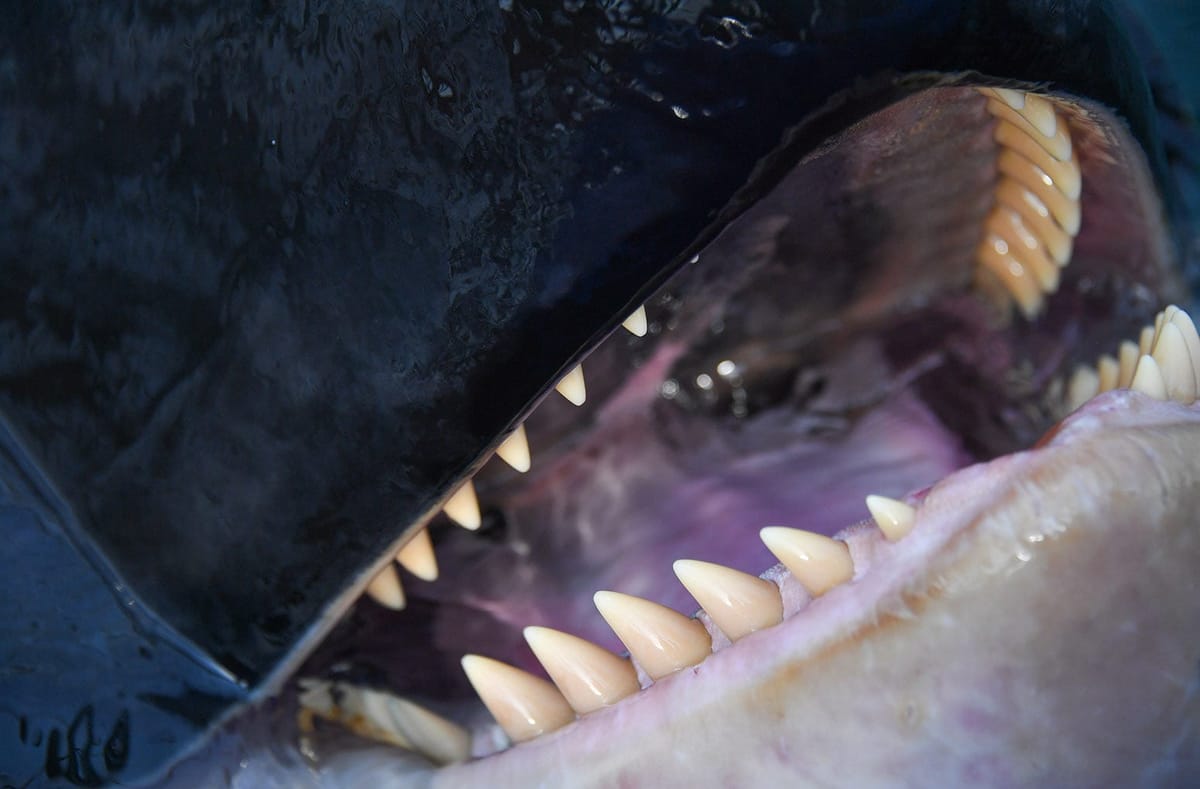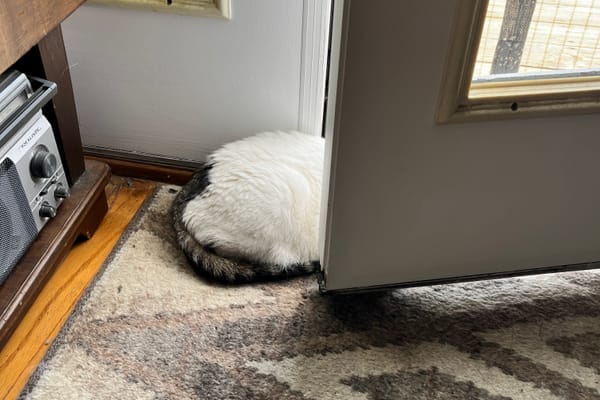Indignity Vol. 2, No. 10: Flee Willy.
NATURAL HISTORY DEP'T.

Killer Whales Are Whale-Killers
Note: This item contains graphic descriptions of carnivorous behavior.
VICE PUBLISHED AN article this week looking into the question of comparative thanatology—the question, as the headline put it: "Do Animals Understand What It Means to Die?"
The piece explored cases of primates and elephants carrying around their dead babies, or primates or corvids seeming to gather to pay their respects to dead members of their social groups. Do these creatures have a concept of mortality, or are they just responding to the puzzle of something that was moving becoming immobile?
There's another way of looking at what animals think about death, though, which was hinted at in the article's opening anecdote: before chimpanzees in Uganda approached and groomed a dead albino baby chimp, it was a living albino baby chimp, whose presence panicked the other chimps until "adult chimpanzees killed the baby." Do animals understand what it means to kill?
This, in turn, brings up the news in the journal Marine Mammal Science that scientists have now witnessed killer whales killing blue whales, including what researchers believe was a fully adult pygmy blue whale. "Pygmy" here means that the whale was 60 or 70 feet long, rather than 110. The sightings took place in 2019 and 2021 near the edge of the continental shelf off Bremer Bay, Australia.
The report makes for gruesome reading. In the most spectacular of the killings, that of the adult pygmy blue whale, the observers came upon the attack, by a dozen or so killer whales, while it was already underway. The whale's rostrum—the top of its upper jaw, or face—had been ripped open to the bone, and "most of the dorsal fin had also been bitten off." After more than half an hour of further lunging and biting at their maimed prey, with the whale "bleeding profusely" and slowing down, "three adult female killer whales lined up, side-by-side, perpendicular to the blue whale...and rammed headlong into its flank, pushing it through the water and then forcing it under."
This brought the whale to a halt, the authors report. "Moments later...while it was still alive, an adult female killer whale put its head inside the blue whale's mouth and began feeding on its tongue." When the blue whale finally died and sank, the killer whales apparently tore its carcass in two underwater, and three dozen or so more of them showed up to feed on it.
The two other attacks were both on blue whale calves. In one, the killer whales chased their prey down for 15 miles at speeds of over 10 mph to exhaust it before attacking. In the other, while tearing away "large chunks of skin and blubber" from a calf roughly twice their own length, the killer whales teamed up to trap it vertically, so it could neither breathe nor escape: "When the blue whale attempted to dive, killer whales could be seen below it, pushing it back toward the surface. At the surface, other killer whales swam up on its head and blowhole and pushed it down again."
Nature is lethal, and frequently horrible about it by human standards, as any well-read citizen of the planet should know. The living world, in all its forms, deserves our nonjudgmental benevolence as observers. Killer whales, though? Killer whales have to know what they're doing.
Despite the effort to rebrand them as "orcas," and to treat them as brawnier, graphically interesting dolphins, killer whales had the right name all along. The scientific literature about killer whales is a study in creative, methodical, and sometimes gratuitous ways of dealing death. Killer whales may flip over great white sharks to stun them, so they can slurp out their livers and leave the rest of the body behind (the sharks will flee an area for months if killer whales pass through). They synchronize their swimming to create waves that wash seals off ice floes, then they either carefully drown the seal and butcher the meat away from the blubber, or if they got the wrong kind of seal, they leave it alone.
And where some large segment of human society may feel guilty now about the depredations of the commercial whaling industry, the scientific record suggests that the killer whales approach their cetacean cousins with the same ruthless disregard that the whalers of old did.
On more or less the directly opposite side of the planet from the blue whale killings, researchers asked hunters in Inuit communities of Nunavut, Canada, to describe what they'd seen killer whales doing through the years. The hunters said they'd seen killer whales deliberately drowning or suffocating bowhead whales, or teaming up to hold and batter the bowheads, or "tearing chunks of flesh out of the living whale." The killer whales would "'play with' the narwhal, or pieces of them, and throw them around"; the hunters gave secondhand reports of killer whales "’playing soccer' with the narwhal" or "eating a beluga that was still alive and moving."
"Eight interviewees noted that killer whales sometimes 'kill for fun,' kill without eating, or 'play' with wildlife," the researchers reported. One person told them the killer whales "would sometimes kill 'hundreds' of belugas and not eat them all."
"Observations of killer whale eating baleen whales include ripping out only tongues and lips, the favored parts," the researchers wrote.
In 1982 and 1983, scientists on the Grand Banks of Newfoundland saw killer whales attacking humpback whales, harassing and biting at them as they swam. "Many lumps of stringy blubber (ca. 1 kg), with small pieces of flesh attached, were seen floating in the water," they wrote of the 1982 attack, in which 10 or 12 killer whales went after 20 or 30 humpbacks.
Both times they saw the attacks, the researchers wrote, "we had the definite impression that the orcas had no immediate intention of attempting to kill a humpback":
The orcas may have been simply attempting to obtain mouthfuls of humpback flesh. Alternatively, they might have been testing the humpbacks to single out animals which, perhaps on account of disability, sickness, or age, could then be killed by a greater number of orcas acting cohesively.
In the new report on the blue whale killings, the scientists wrote that the killer whales sought to attack as a group as soon as their prey slowed down or came to a halt, "because 'flight' species...have no known behavioral defense once they are stopped." But whale species that do have defensive strategies don't necessarily fare any better. In October 1997, researchers off the coast of Southern California watched a protracted struggle between an estimated nine sperm whales and at least 17 killer whales.
The sperm whales, the researchers wrote, had gathered a defensive "rosette" formation, with their heads in and their tails out, to try to fend off the killer whales. For four hours—at the beginning of which there was already "a large slick of blood and oil on the water"—the scientists watched as small groups of female and immature killer whales "attacked in waves," biting into the sperm whales' middles and wrenching or twisting at them, to tear at the flesh or to drag them out of formation.
"One of the most striking features of the attack was the apparent helplessness of the sperm whales," the authors wrote. As the sperm whales grew weaker, the killer whales attacked more and more frequently, until at last one of the injured sperm whales rolled over on its side. At that point, a large male killer whale that had been waiting nearby charged in, "took the sperm whale in its jaws and shook it violently from side-to-side. He then spun it around at the surface, throwing huge sprays of water into the air in an immense display of power not shown by any of the females at any time during the attack."
Another sperm whale tried to come to the rescue, and "in the confusion that followed," one or the other of them ended up definitely dead, dragged away for all the orcas to feast on. The rest of the sperm whales were not much better off:
One sperm whale rolled over next to the ship and a huge flap of blubber (approximately 2 m X 1.5 m) opened up, exposing the underlying flesh. Another individual had a large chunk of flesh ripped out of its back below the dorsal hump exposing what appeared to be ribs. One individual had its intestines floating beside it and draped over its dorsal hump. Another individual that spy-hopped had a broken jaw that jutted off laterally at a 90" angle at about the mid-point. (We do not know for certain that this was a result of the attacks.) We suspect that at least three or four of the survivors eventually died from wounds they received, and it is quite possible that the entire herd died as a result of injuries from the attack.
I first read the sperm whale story probably 20 years ago, and that image of the waste and the suffering has stuck with me ever since. To catch and eat one sperm whale, the killer whales had to break the formation; to break the formation, they attacked all the whales, maybe killing an extra three or four or all of them along the way. The killer whales were cooperative and collaborative about it. They formed a plan and worked it out. It was vicious, inventive, and premeditated: the kind of thing we like to call "inhuman," by which we mean essentially human.

SANDWICH RECIPE DEP’T.
IN KEEPING WITH the above vibe, we present instructions for the assembly of a select sandwich from Salads, Sandwiches and Chafing Dish Recipes, Copyright 1916, now in the public domain for the delectation of all, written by Marion Harris Neil, M.C.A., former Cookery Editor, The Ladies’ Home Journal, author of How to Cook in Casserole Dishes, Candies and Bonbons and How to Make Them, Canning, Preserving and Pickling, and The Something-Different Dish.
TONGUE SANDWICHES
1/2 pint (1 cup) chopped cooked tongue
1 teaspoonful mustard
1 teaspoonful butter
1/4 teaspoonful paprika
1 hard-cooked egg
1/2 lemon
Pinch grated nutmeg
Buttered bread
Mix the tongue with the yolk of egg, add the butter, strained lemon-juice, and the seasonings. Spread between thin slices of buttered bread and cut in triangles.
Another Method.—Put one-half pound each of cooked tongue and boiled ham through a food-chopper, add salt, pepper, and grated nutmeg to taste. Stir in one-half cupful of melted butter, one tablespoonful of chopped olives, and a small bottle of pickles chopped fine. Cut the bread as thin as possible. Spread it with some of the meat mixture, cover with a layer of washed and drained cress, and place another slice of the bread on the top.
If you decide to prepare and enjoy this sandwich, kindly send a picture to us at indignity@indignity.net.






